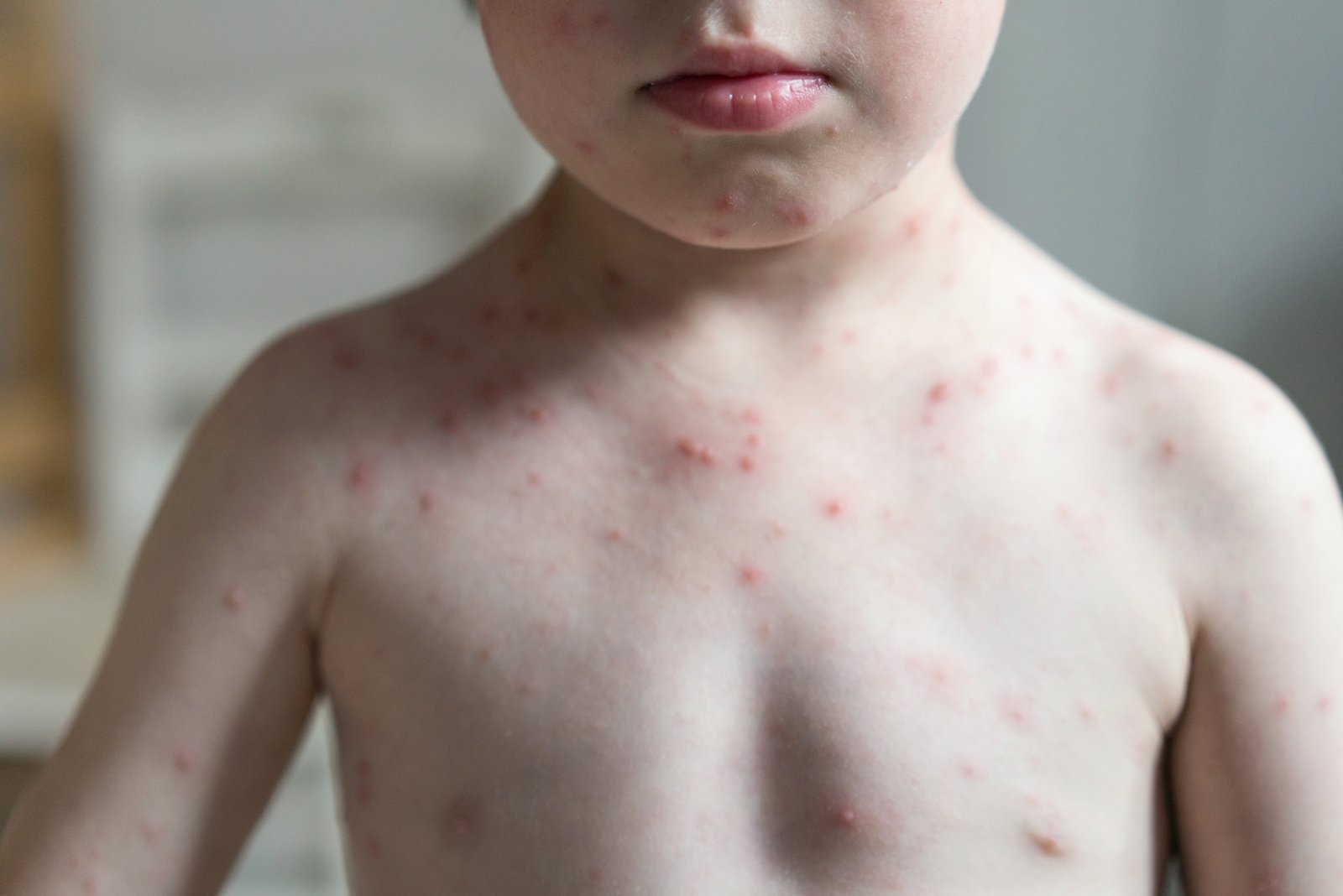Chicken Pox – Basic microbiology, parasitology, and immunology; nature, reproduction, growth, and transmission of common microorganisms and parasites in Bangladesh; prevention including universal precaution and immunization, control, sterilization, and disinfection; and specimen collections and examination. Students will have an understanding of common organisms and parasites caused human diseases and acquire knowledge about the prevention and control of those organisms.
Q. Write down short note on- Chicken Pox,
Answer:
Chicken Pox
Chickenpox is an infection caused by the varicella-zoster virus. It causes an itchy rash with small, fluid-filled blisters.

Clinical Feature:
The itchy blister rash caused by chickenpox infection appears 10 to 21 days after exposure to the virus and usually lasts about five to 10 days. Other signs and symptoms, which may appear one to two days before the rash, include:
- Fever
- Loss of appetite
- Headache
- Tiredness and a general feeling of being unwell (malaise)
Once the chickenpox rash appears, it goes through three phases:
- Raised pink or red bumps (papules), which break out over several days
- Small fluid-filled blisters (vesicles), which form in about one day and then break and leak.
- Crusts and scabs, which cover the broken blisters and take several more days to heal

Complications
Chickenpox is normally a mild disease. But it can be serious and can lead to complications including:
- Bacterial infections of the skin, soft tissues, bones, joints or bloodstream (sepsis)
- Dehydration
- Pneumonia
- Inflammation of the brain (encephalitis)
- Toxic shock syndrome
- Reye’s syndrome in children and teenagers who take aspirin during chickenpox
- Death

Read More….
